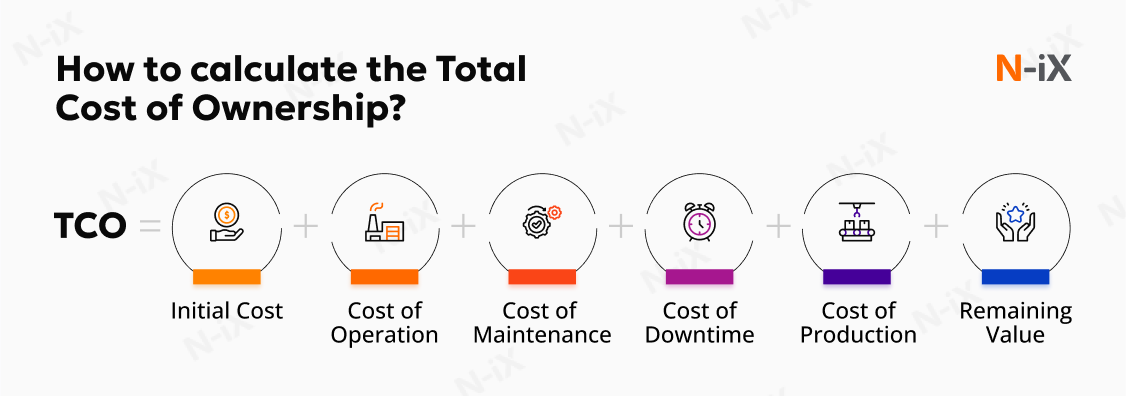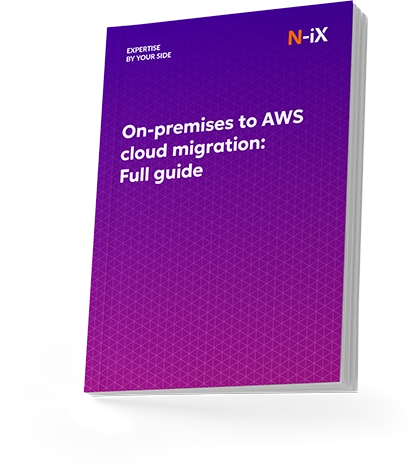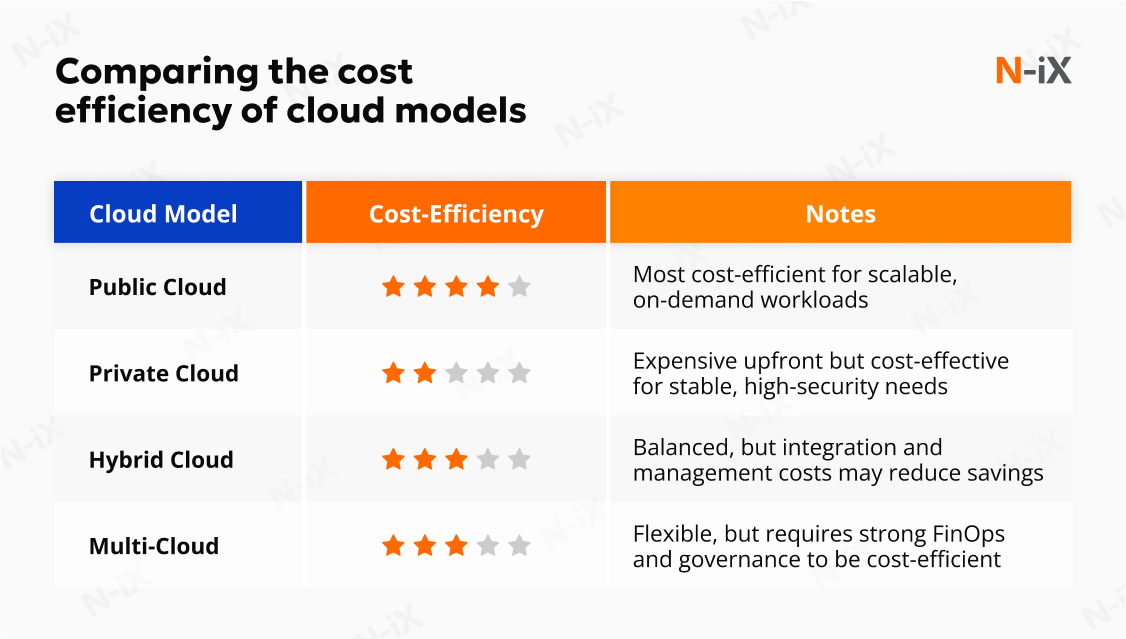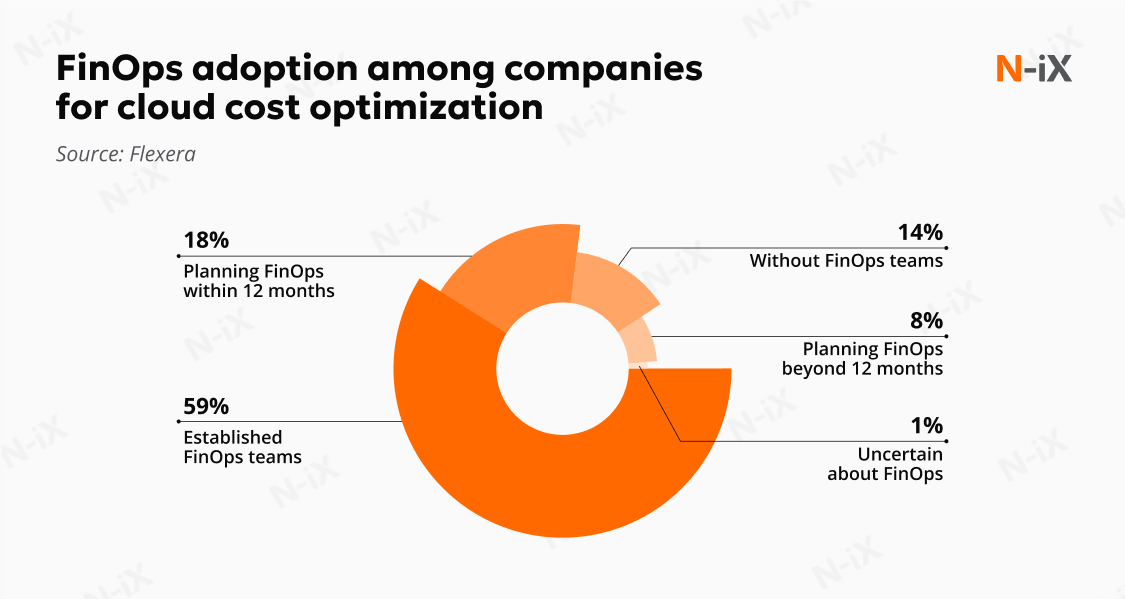Controlling costs, justifying cloud investments, and aligning technology spending with business goals are critical reasons why calculating and maximizing cloud ROI has become a top priority for enterp...
Controlling costs, justifying cloud investments, and aligning technology spending with business goals are critical reasons why calculating and maximizing cloud ROI has become a top priority for enterprises. According to the 2025 Flexera Cloud Report, organizations estimate that around 27% of cloud spend is wasted, while cloud investments continue to grow. However, accurately calculating and optimizing costs is challenging. Our cloud consultants share key strategies and best practices to help you measure ROI effectively and leverage the full value of cloud migration.
Cloud ROI represents the financial return from cloud computing investments relative to their costs. This metric provides a quantitative measurement of whether cloud migration or adoption efforts deliver tangible value to an organization.
Effective cloud ROI analysis includes a detailed evaluation of all investment components, as well as immediate and strategic benefits. For a proper calculation, companies usually evaluate them over a 3-5 year period following the transition. Let's explore the typical cost categories and benefits companies consider during the process.
Organizations typically include two cloud migration cost categories: initial implementation and recurring operational expenses. One-time investments include:
Ongoing investments involve recurring expenses that continue throughout the cloud lifecycle:
Total cost of ownership establishes the foundation for accurate ROI calculations. TCO captures all direct and indirect expenses related to cloud adoption and ongoing operations, providing the complete financial picture organizations need for informed decision-making.
Calculating TCO identifies current expenses that will be eliminated or reduced after moving to the cloud. By clearly understanding your on-premises infrastructure costs, you can more accurately estimate migration expenses and better evaluate cloud adoption's overall cost and potential ROI.

When calculating cloud ROI, it is crucial to understand the immediate and strategic value of migration.
Immediate benefits typically appear within the first year of cloud implementation. We will illustrate them with one of N-iX's success stories of effective cloud adoption. We partnered with a global retail company that aimed to modernize the on-premises B2B franchise order system through migration. As a result of our cooperation, they gained several significant quick benefits:
Read the full use case here: Boosting efficiency and cutting costs in retail with AWS and Magento
To highlight the strategic benefits of cloud adoption, let's review the next use case. N-iX worked with a stock photography company, which aimed to cut costs and speed up data processing by migrating from on-premises to the cloud. This case study demonstrates the strategic value of the cloud that evolves over time:
Read the full case here: Optimizing costs with data migration to the cloud for a leading stock photography platform
Planning and continuous optimization are fundamental to achieving optimal returns from cloud investments. Organizations that implement structured approaches to cloud cost management can significantly reduce budget waste and improve their ROI.
Cloud adoption succeeds when migration strategies align with specific business goals. Rather than moving everything simultaneously, assess your current infrastructure to understand what workloads need to be migrated, why, and in what sequence. This helps ensure the optimal use of cloud resources once the workload is migrated. Examine current operational costs, performance requirements, and potential business impact to set your migration goals.
After auditing your infrastructure and defining targets, you can start creating a well-thought-out adoption plan to avoid unnecessary expenses and ensure alignment with long-term goals. Planning prevents rushed decisions leading to inefficiencies or rework. Set and monitor measurable objectives to ensure you can track progress and assess cloud migration ROI throughout the implementation process.



Choosing the right cloud model directly impacts ROI performance. Public, private, multi-cloud, or hybrid architectures suit different business requirements and budgets. Matching the environment to your workload needs ensures you're not overpaying for unused features or compromising on critical capabilities, directly boosting ROI in cloud computing.
For instance, a public cloud might offer cost-effective scalability for startups, while a hybrid model could suit enterprises needing on-premises control alongside cloud flexibility. Multi-cloud approaches enable organizations to optimize workloads across various providers, capitalizing on each platform's strengths, though they come with added management and governance.

Regular audits and ongoing monitoring of your cloud usage are essential to detect inefficiencies and optimize performance. Cloud provider dashboards or third-party tools help track resource consumption, identify idle instances, rightsize resources, and detect bottlenecks. Routine audits help uncover hidden costs, like forgotten test environments running in the background. Our cloud experts also recommend implementing continuous monitoring to ensure you only use what you need. This ongoing visibility helps fine-tune operations, reducing waste and enhancing value over time.
Adopting FinOps (Financial Operations) brings together IT, finance, and business teams to collaboratively manage cloud costs. Cloud FinOps practices, such as tagging resources for accountability and forecasting usage, ensure spending aligns with value. These strategies prevent budget overruns and maximize cloud ROI by tying expenses directly to business outcomes. According to the Flexera cloud report, in 2025, 59% of enterprises stated they established a FinOps team to manage cloud costs, while another 26% of respondents plan to invest in FinOps.

Cost management tools are also valuable for analyzing spending trends and establishing budgets. You can use third-party tools or platforms offered by your cloud provider. For example, AWS Cost Explorer, Azure Cost Management, and Google Cloud's cost management tools enable granular monitoring and optimization of cloud expenses.
Auto-scaling is a game-changer for optimizing costs and performance. Adjusting resources automatically based on actual demand prevents overprovisioning during low-traffic periods or underprovisioning during spikes.
Implementing auto-scaling solutions also enhances system reliability. By eliminating idle resources and distributing workloads efficiently, organizations achieve significant savings while improving application performance and uptime.
Poorly managed data can quietly drive up cloud costs if not managed properly. Evaluate your storage needs and use tiered storage options. For frequently accessed data, choose faster and pricier storage, while older, less-used data can be archived and moved to cheaper cold storage. Regularly review and delete obsolete data to avoid paying for unnecessary space. Optimizing storage cuts expenses and improves access speeds for critical data, adding operational value and enhancing cloud ROI.
A security breach can wipe out ROI gains through downtime, data loss, or reputational damage. Invest in robust cloud security measures like encryption, identity access management, and regular vulnerability assessments. Leverage cloud provider tools and comply with industry standards to protect your environment. Prioritizing security upfront prevents costly incidents and ensures business continuity, safeguarding the value derived from your cloud investment.
Cloud adoption requires specialized expertise that many organizations lack internally. Partnering with cloud experts helps businesses maximize ROI through proven methodologies and industry best practices.
Cloud consultants, like N-iX, assist in planning and managing requirements effectively, ensuring project execution aligns with business goals. Our engineers consistently implement best practices, including continuous integration, continuous delivery, and automated quality assurance, to enhance efficiency and speed time to market. Expert guidance helps achieve desired results faster and reduce trial-and-error costs, significantly boosting ROI.
ROI cloud computing measurement requires more than calculating immediate cost savings. Organizations must evaluate both tangible expenses and strategic benefits that emerge over time to understand the actual value of their cloud investments. Partnering with experienced cloud consultants can accelerate these outcomes and help avoid common pitfalls.
For instance, N-iX, with over 23 years of experience, has supported organizations in optimizing their cloud investments and achieving measurable ROI improvements. Our team of over 400 cloud professionals has successfully delivered cloud transformation projects across diverse industries, combining technical expertise with business acumen to ensure optimal outcomes.
As an AWS Premier Tier Services Partner, Google Cloud Platform Partner, and Microsoft Solutions Partner, N-iX delivers advanced services for cloud ROI optimization. Our adherence to security standards, including PCI DSS, ISO 27001, and GDPR, ensures secure, compliant implementations that protect your investments throughout the cloud journey.
Ready to maximize your cloud ROI? Contact N-iX today to discover how we can help optimize your cloud investments and accelerate your digital transformation success.